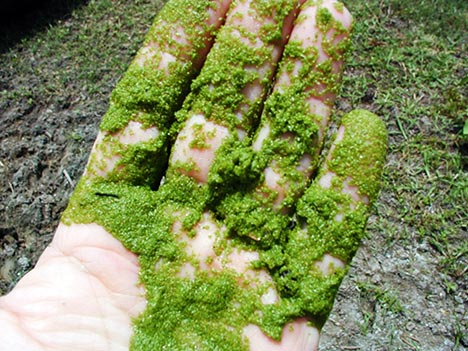Algae and pollen grains reveal sudden spike in Antarctica’s temperature 15.7 mln yrs ago
 Washington, October 1 : A team of scientists has found evidence in the form of algae and pollen grains of a sudden, remarkably warm period in Antarctica that occurred about 15.7 million years ago and lasted for a few thousand years.
Washington, October 1 : A team of scientists has found evidence in the form of algae and pollen grains of a sudden, remarkably warm period in Antarctica that occurred about 15.7 million years ago and lasted for a few thousand years.
The evidence was found by Sophie Warny, LSU (Louisiana State University) assistant professor of geology and geophysics and curator at the LSU Museum of Natural Science, and colleagues.
Last year, as Warny was studying samples sent to her from the latest Antarctic Geologic Drilling Program, or ANDRILL AND-2A, a multinational collaboration between the Antarctic Programs of the United States, New Zealand, Italy and Germany, one sample stood out as a complete anomaly.
"First I thought it was a mistake, that it was a sample from another location, not Antarctica, because of the unusual abundance in microscopic fossil cysts of marine algae called dinoflagellates. But it turned out not to be a mistake, it was just an amazingly rich layer," said Warny.
Some colleagues had noted an increase in pollen grains of woody plants in the sample immediately above, but none of the other samples had such a unique abundance in algae, which at first gave Warny some doubts about potential contamination.
"But the two scientists in charge of the drilling, David Harwood of University of Nebraska - Lincoln, and Fabio Florindo of Italy, were equally excited about the discovery," said Warny.
"They had noticed that this thin layer had a unique consistency that had been characterized by their team as a diatomite, which is a layer extremely rich in fossils of another algae called diatoms," he added.
All research parties involved met at the Antarctic Research Facility at Florida State University in Tallahassee.
Together, they sampled the zone of interest in great detail and processed the new samples in various labs.
One month later, the unusual abundance in microfossils was confirmed.
Among the 1,107 meters of sediments recovered and analyzed for microfossil content, a two-meter thick layer in the core displayed extremely rich fossil content.
This is unusual because the Antarctic ice sheet was formed about 35 million years ago, and the frigid temperatures there impede the presence of woody plants and blooms of dinoflagellate algae.
"We all analyzed the new samples and saw a 2,000 fold increase in two species of fossil dinoflagellate cysts, a five-fold increase in freshwater algae and up to an 80-fold increase in terrestrial pollen," said Warny.
"Together, these shifts in the microfossil assemblages represent a relatively short period of time during which Antarctica became abruptly much warmer," he added. (ANI)